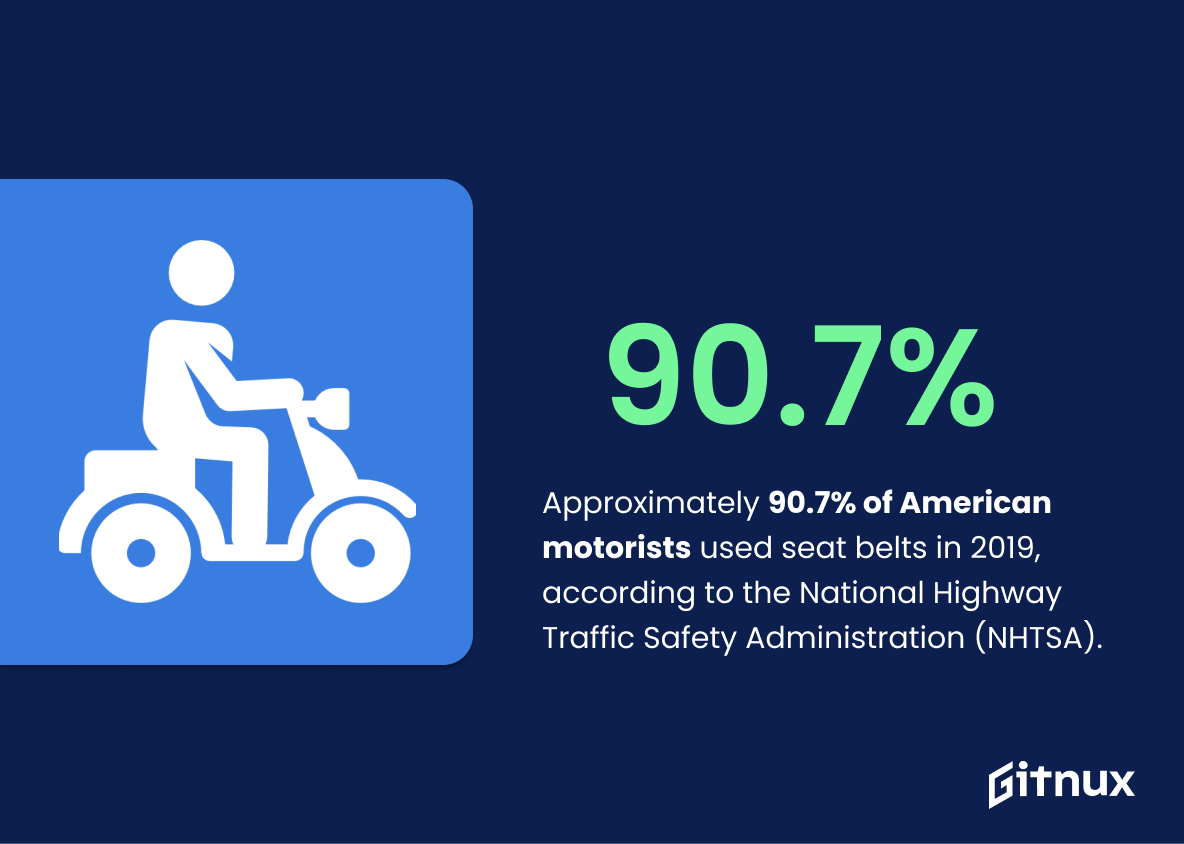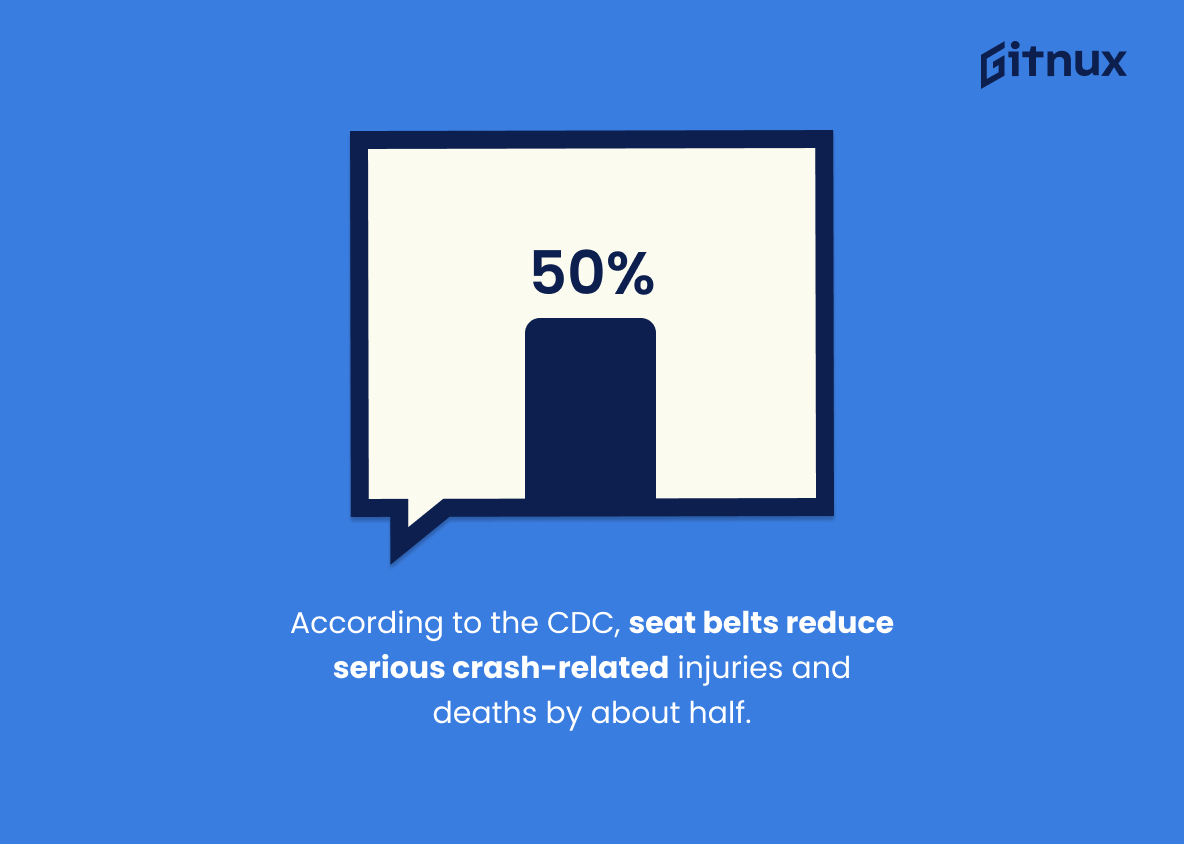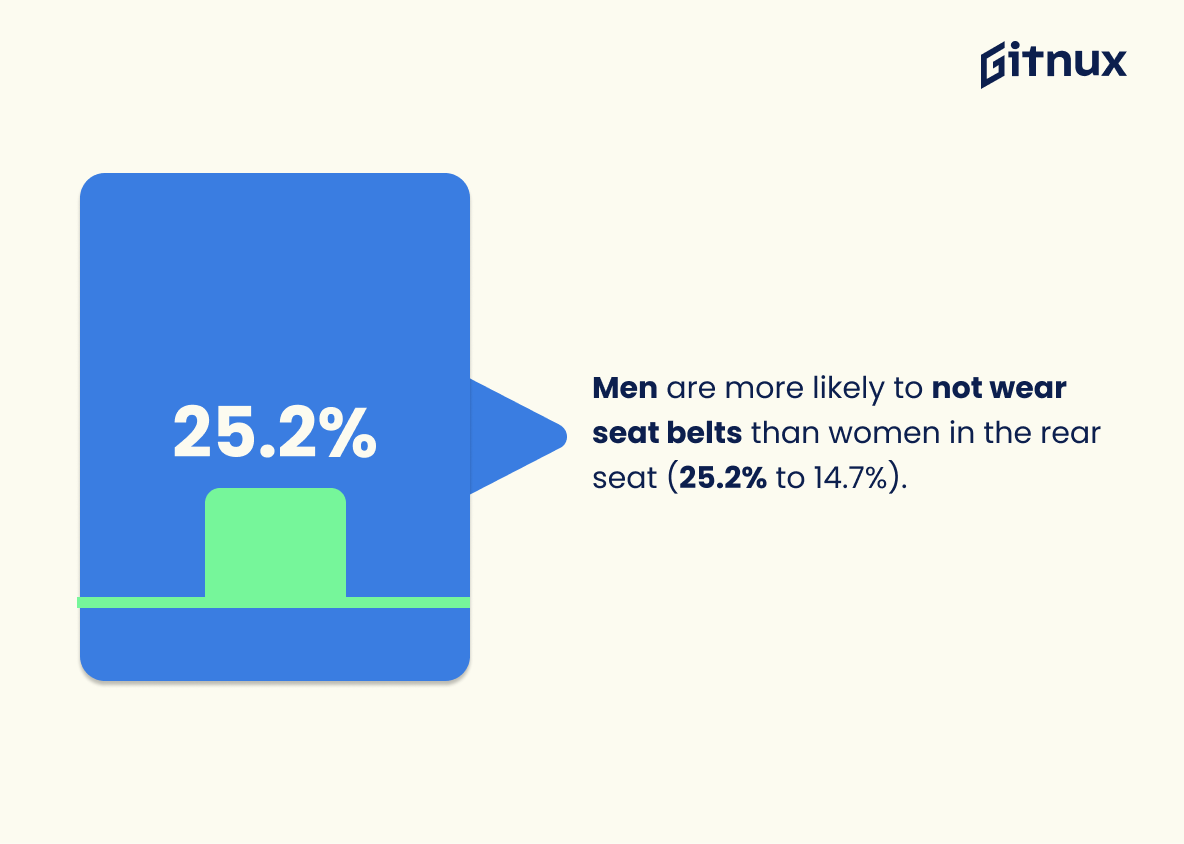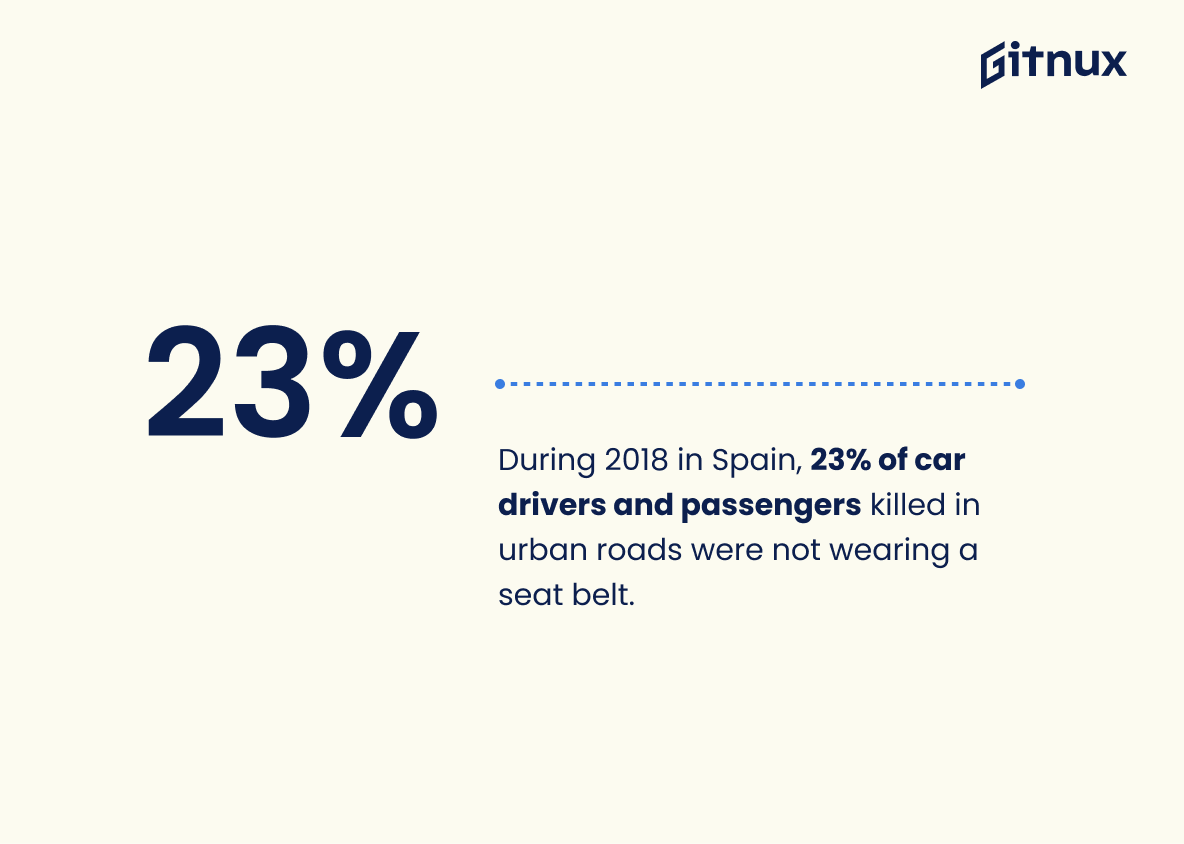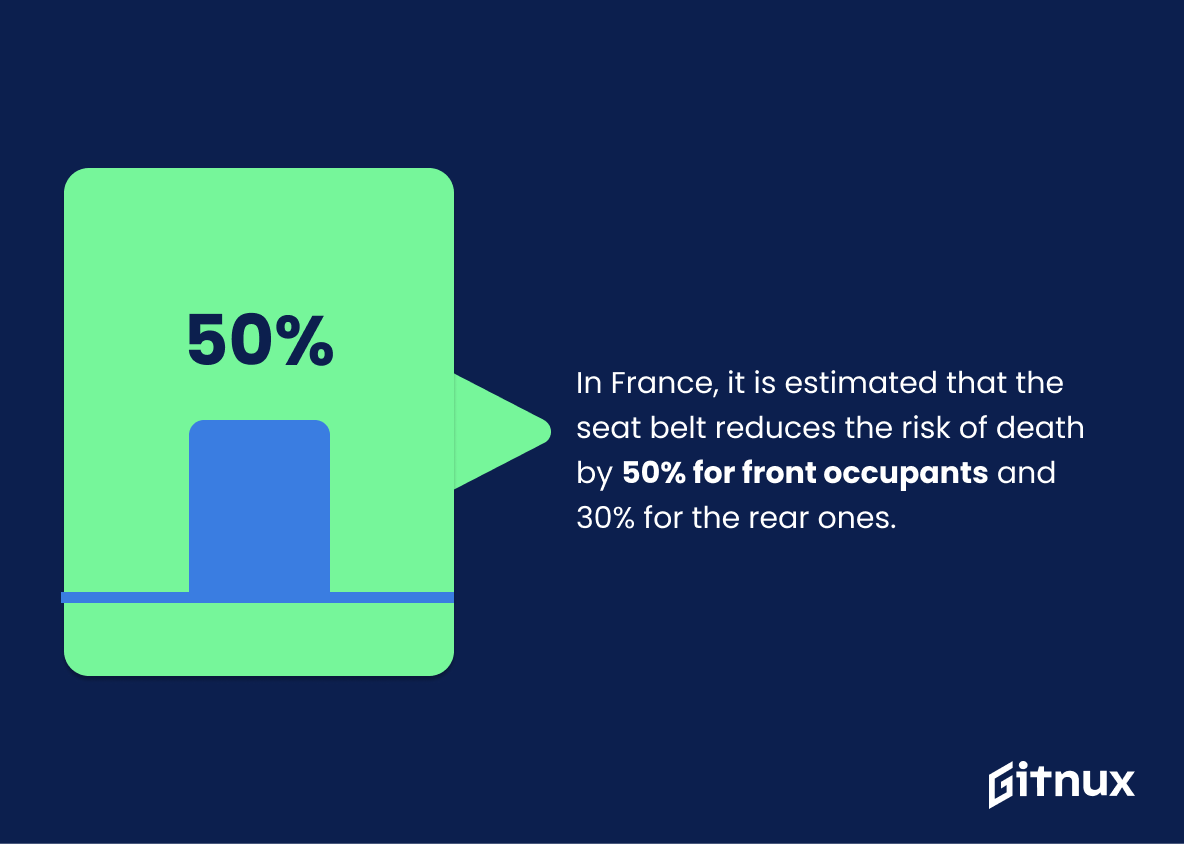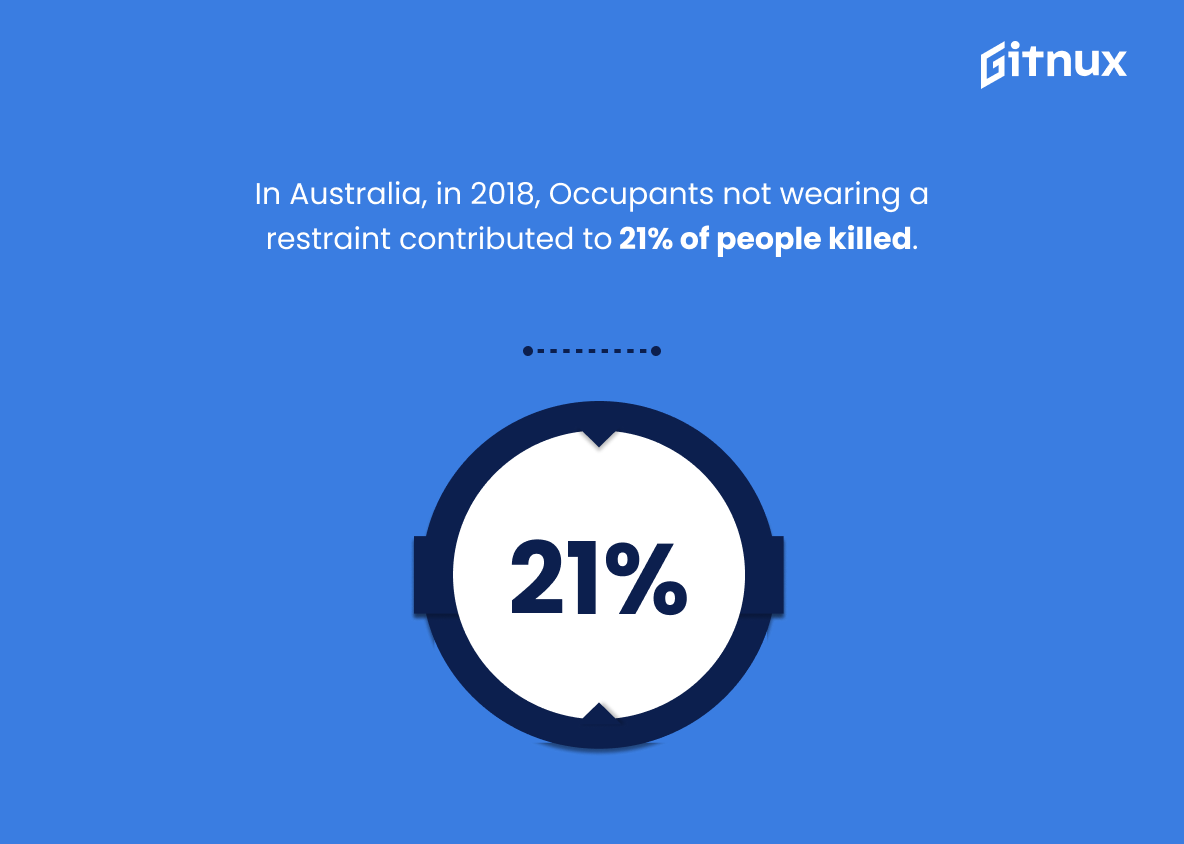Harnessing the power of statistics can illuminate the importance of everyday safety measures that we often take for granted. In this instance, we’re focusing on seat belts, one of the most crucial safety features that has saved countless lives since its inception.
This blog post will delve into the compelling world of seat belt statistics, from the shocking numbers that highlight their role in reducing road fatalities to intriguing trends worldwide. We aim to not only inform you about these essential safety tools but also emphasize the significance of buckling up every time you hit the road. Get ready for a journey into the numbers behind the straps that save lives.
The Latest Seat Belt Statistics Unveiled
Approximately 90.7% of American motorists used seat belts in 2019, according to the National Highway Traffic Safety Administration (NHTSA).
Given the focus of your blog post is seat belt statistics, it’s vital to embrace the idea that safety is more than just a concept; it is an everyday practice. The startling figure that nearly 91 out of 100 American motorists buckled up in 2019, reveals the scope of engagement in this safety practice.
These numbers, released by the reputable National Highway Traffic Safety Administration (NHTSA), crystallize the reality, providing a quantitative backbone that accentuates the growing comprehension and acceptance of seat belt use in the U.S. It offers a panoramic view of American safety habits and sets the barometer for assessing the impact of safety campaigns, regulations, and awareness drives. This statistic is pivotal in fuelling further discussions on seat belt usage, enforcement, and policy considerations.
According to the CDC, seat belts reduce serious crash-related injuries and deaths by about half.
The dramatic portrayal by the CDC, which notes a near 50% reduction in serious crash-related injuries and fatalities through seatbelt use, anchors as a compelling centerpiece in the discourse of seat belt statistics. Unveiling this striking fact lifts the curtain on the sheer extent to which this simple, yet often neglected precaution can influence survival rates in car accidents.
It undeniably amplifies the import of wearing seat belts, while simultaneously providing both a captivating hook and an authoritative validation for the critical issue being discussed. Further, it serves as a pivotal springboard in the narrative, spawning a multitude of other statistical explorations revolving around seat belt use. The CDC’s data pushes the conversation past casual advice and cements it as a life-saving necessity, proselytizing the weighty mantra: ‘Click it or risk it.’
In 2017, seat belts saved nearly 15,000 lives.
In the vast sweep of numbers and figures, the astonishing narrative of nearly 15,000 lives saved by seat belts in 2017 grabs us by the collar. It implores us to sit up and notice the staggering evidence of seat belt effectiveness. The mute hum of this data breathes a life-affirming testament to safety measures while it silently mourns the preventable tragedies.
This data hits home the message of the pivotal role seat belts play in our daily drives, baiting the protective instinct in us to belt up and promote the same caution to our loved ones. The data serves as a Morse code, that seat belts unquestionably swing the odds in favor of life amidst unpredictable road accidents.
Men are more likely to not wear seat belts than women in the rear seat (25.2% to 14.7%).
Delving into the contrasting behaviors between genders, our recent data unveils an intriguing discrepancy. Namely, it sheds light on how male passengers tend to exhibit a higher propensity for laxity towards seat belt usage in rear seats – at a ratio of 25.2% to women’s 14.7%.
In a world where seat belt statistics are integral keynotes for safety legislation, insurance policies, and automobile design, such figures radiate significance. They serve as an eye-opening reminder that while overall seat belt usage is on the rise, sub-groups within the population continue to harbor risky habits. This disparity foregrounds the need to sculpt targeted educational programs, awareness campaigns, or even policy changes to ensure both genders are safeguarded equally in an automobile emergency.
In the intricate tapestry of seat belt statistics, this particular strand casts a light on the behavioral trends in different genders and highlights the urgent need for targeted safety measures.
Adults aged 18-24 years old are less likely to wear seat belts compared to adults aged 35 and older.
Examining the seat belt usage among different age groups, particularly between adults aged 18-24 years and those aged 35 and older, sheds light on an intriguing, and somewhat alarming, disparity in safety habits. This trend serves as a beacon, illuminating an area of focus for improving road safety. It highlights the blend of youth’s daring independence, arguably an underestimation of risk, juxtaposed with the wisdom and caution that tends to accompany age.
In drawing attention to these variations, we are not only able to identify potential ‘at risk’ demographics, but also refine our strategies and messages for safety campaigns to resonate more effectively with different age groups. The recognition of this statistic is integral to fostering a culture optimally primed for safety on the roads.
Not buckling up can cost you up to $200 in Texas.
In the grand arena of seat belt statistics, the specter of a potential $200 fine in Texas takes center stage. It brazenly underscores the economic implications of not adhering to safety regulations. Imagine, a mere act of clicking your seat belt could safeguard not only precious lives but also hard-earned dollars from slipping into the abyss of legal penalties.
Reflect for a moment on what $200 could mean – a generous grocery shopping spree, an enchanting dinner for two, a pair of snazzy sneakers – gone in the blink of an eye, simply for neglecting a seatbelt. This, my friends, is a sobering rendezvous with reality in our discourse on seat belt statistics, proving once again that the concept of safety isn’t confined to the physical alone, but extends its tendrils into the financial realm as well.
In a Canadian survey, it was found that 95% of Canadians always wore their seat belts in 2019.
Spotlighting this intriguing Canadian survey into our discussion, the startling revelation that 95% of Canadians religiously ensured their seat belts were fastened in 2019, paints an eloquent picture of an ingrained culture of safety and compliance. This empirical finding injects life into our discourse, offering a tangible testament to systematic and personal efforts aimed at boosting seat belt usage rates.
Moreover, it pulsates as a potential beacon for global comparison, establishing a distinctive point of reference for countries seeking to enhance their own road safety statistics. This figure, far from simply being a cold digit, provides a warm assurance of the vital role that awareness, legislation, and enforcement play in cultivating a safety-conscious society.
During 2018 in Spain, 23% of car drivers and passengers killed in urban roads were not wearing a seat belt.
The chilling revelation of the 2018 Spanish data unearths a silent assailant in car deaths: the missing seat belt. Occupying a staggering 23% of the total fatalities on urban roads, the absence of this humble safety device unveils a deadly hazard hiding in plain sight. In a blog post dissecting seat belt statistics, such dramatic evidence unfurls the grim consequences of disregarding basic vehicular safety.
It punctuates the narrative with hard-hitting realism, underscoring the gravity of ignoring one, simple click. The stark reality illustrated by this statistic becomes an insistent call to action, dramatically highlighting the delicate line between life and death that a seat belt can define.
In France, it is estimated that the seat belt reduces the risk of death by 50% for front occupants and 30% for the rear ones.
Tying directly this statistic into the theme of our blog post on Seat Belt Statistics, we spotlight the life-saving influence of this simple contraption. The elegant twist of data unraveled in France reveals the compelling fact that for front seat passengers, the risk of mortality plunges by a dramatic 50% when seat belts are fastened. Not just the knights in the front row, even back seat passengers can bask in a level of protection – their risk tumbles down by 30%.
This isn’t simply a relay of numbers, dear readers, but a testament to how effective a guardian these seat belts amount to be, their role not to be downplayed or overlooked. Knotting these statistical threads together paves the path to a firm understanding of seat belt safety and its undeniable necessity in our everyday travels.
In Australia, in 2018, Occupants not wearing a restraint contributed to 21% of people killed.
Highlighting the proportion of fatalities involving unrestrained occupants in Australia in 2018 intertwines alarming reality with the significance of seat belt usage. The 21% toll hints at a crucial behavioral lapse amongst road users, reinforcing the urgency for seat belt education. This sobering piece of data, woven into a blog post about seat belt statistics, functions as a wakeup call, underscoring the life-saving difference that the simple act of buckling up can make. The numbers don’t lie; they silently echo the chorus – seat belts save lives.
Despite a belt usage rate of 94.67% in Japan, 885 people died in 2015 as they were not wearing a seat belt.
Highlighting the chilling contrast between Japan’s impressive seat belt usage rate and the sobering fatality figures, this statistic is a stark reminder of a seemingly underappreciated fact. Safety protocols in a vehicle, like seat belt adherence, still go overlooked by a small but significant portion of citizens, lethally so. It urges us to reflect not just on the failure in compliance, but also on the potential inadequacies of awareness campaigns and legal enforcement.
More than a number, it’s an echo of lives that could have been saved, underscoring the human tragedy beneath the percentages. It tugs on our curiosity, beckoning us to delve deeper into the reasons for this disconnect and how it can be bridged. Therefore, such a statistic is indeed a paramount inclusion in a blog post about Seat Belt Statistics.
According to a report by WHO, an adult without a seatbelt is 50% more likely to die in a road crash.
In weaving the narrative of our blog post on Seat Belt Statistics, we cannot overlook the incisive report by WHO, essentially serving as a stark reminder of the role of seatbelts in road safety. Picture this: an adult without a seatbelt faces a chilling 50% higher risk of losing their life in a road crash. Like a silent, unassuming guardian, a simple click of that seatbelt can potentially halve the odds, dramatically shifting this grim scenario. This revelation isn’t simply a statistic; it’s a life-saving truth, a call to secure lives and a testimonial to the power held by a humble seatbelt.
In Sweden, 80% of vehicle occupants who were fatally injured were not wearing seat belts.
Illuminating a stark truth, the Swedish statistic underscores the driving force behind the huge emphasis of the apt saying, ‘clunk click every trip.’ When you see that 80% of the drastically injured vehicle occupants were not adhering to the safety measure as simple as wearing a seat belt, it startlingly draws a direct line between this slight miss and fatal outcomes.
These percentages, pulled from the cold climes of Sweden, resonates broadly, reinforcing a global appeal for the use of seat belts. The formidable figure of 80% tugs this issue out from the shadows, highlighting it as a tragic triumph of negligence over a tiny click that could potentially save lives. Embedded in a blog post on Seat Belt Statistics, this data indeed casts a hard-hitting narrative, acting as a chilling reminder for everyone to ‘buckle up.’
The seat belt was invented by Nils Bohlin for Volvo—who introduced it in 1959 as standard equipment. Nearly 1 million lives worldwide have been saved by the seatbelt since its invention.
Integrating this impactful statistic into a blog post illuminatively highlights the profound magnitude of Nils Bohlin’s contribution to automobile safety through his invention of the seatbelt for Volvo in 1959.
The staggering revelation that nearly 1 million lives globally have been preserved by this single invention brings an overwhelming clarity to the crucial role seat belts play in safeguarding individuals on the road. In our exploration of seat belt statistics, this dramatic life-saving count serves as a powerful testament to the importance and effectiveness of consistent seat belt use.
Conclusion
From the insightful data analyzed, seat belt usage undoubtedly plays a vital role in road safety. Statistics consistently demonstrate that proper usage of seat belts significantly decreases the chances of fatal injuries during collisions, as well as diminishes the severity of non-fatal injuries. It’s a compelling testament to the life-saving power of this simple vehicle feature.
Therefore, it is essential to continue encouraging and enforcing seat belt use among motorists at all times, because ultimately, it might not just be a law or rule you’re following; it could very well be the thin line between life and death. Remember, “Click it or ticket” isn’t just a slogan — it’s a mantra we should all heed for our own safety. Stay buckled up, stay safe.
References
0. – https://www.www.roadsafety.gov.au
1. – https://www.www.mlit.go.jp
2. – https://www.www.cdc.gov
3. – https://www.www.who.int
4. – https://www.www.transportstyrelsen.se
5. – https://www.www.volvocars.com
6. – https://www.www.nhtsa.gov
7. – https://www.www.tc.gc.ca
8. – https://www.www.txdot.gov
9. – https://www.www.securite-routiere.gouv.fr
10. – https://www.www.iihs.org
11. – https://www.www.dgt.es
